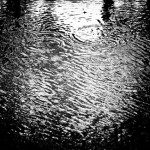THOUSANDS MOURN FOR FATHER PARDOW
Women and Children Weep During Funeral Services for the Noted Jesuit Priest
ALL SEVERELY SIMPLE
Poverty and Humility, to Which the Order is Pledged, the Keynote
—- Four Bishops Present
The New York Times, January 27, 1909
When Archbishop Farley began the low mass for the repose of the soul of Father William O’Brien Pardow in the Church of St. Ignatius Loyola, in East Eighty-fourth Street, yesterday, every seat in the edifice was filled, the aisles were crowded, and thousands stood for hours outside the church to see the coffin of the beloved rector of the Jesuit Church borne to the hearse. Twenty policemen from the East Eighty-eighth Street Station had to be called to keep the crowd in check.
The New York Central’s embankment was used as a stand by the outside throng, and as the coffin was carried down the church steps and pushed gently into the hearse many of those in the crowd showed visible emotion. The men removed their hats, and with bowed heads waited until the small funeral procession passed; women sobbed aloud and the children of the parochial school wept unrestrainedly as the procession took its way up Park Avenue.
The utmost simplicity characterized the entire ceremony. The pomp that the Church accords to priests or other orders was dispensed with. The chanted requiem mass gave way to the unceremonious low mass. There was no music, no singing, no panegyric, no spoken word of sorrow or esteem in the whole ceremony. The body was placed in the poorest of coffins, interred in the lowliest ground with the most meager of inscriptions marking the grave, and there was no sign of deference or distinction in the mass or the absolution or the final blessing of the body at the grave.
Poverty was the keynote of the ceremony through it all, and that is in the vows of the Jesuits when they consecrate their services. They have to take the three vows, poverty, chastity, and obedience. From the time they enter the novitiate until they die humility is the ideal they seek. In death and in life they hold to the ideal so that although the priests of the Jesuit community and the parishioners would do greater homage to the beloved rector, the customs of the order would not permit. So Father Pardow, whose entire life had been lived in the most simple fashion, was buried according to the precedents of his order.
The Archbishop said the mass, assisted by his secretary, the Rev. James Lewis. The office for the dead was recited before the mass by Vicar General Mooney. In the sanctuary in their purple cassocks were three Bishops, former pupils of Father Pardow, at St. Francis Xavier College. These prelates were Bishop Cusack of New York, Bishop McFaul of Trenton, and Bishop McDonnell of Brooklyn. Bishop O’Connor of Newark was also in the sanctuary.
The high altar seats were filled by more than 300 priests, and many more had to find accommodations in the choir loft. The Jesuits were in the greater number, but there was an outpouring of Redemptorists, Passionists, Franciscans, Capuchins, Paulists, Christian Brothers, and, as the head of the Jesuits in the East, Father Joseph Hanselman, the Provincial for Maryland and New York, sat in a sanctuary seat. The body was committed to the grave with his final blessing.
Among the priests present were Mgr. Lavelle, rector of the Cathedral; Mgrs. McCready, Edwards and McGean of New York; McKenna of Westchester, Lyons of Wilmington, and Donnelly of Flushing; Father J.F.X. O ‘Connor, rector of Brooklyn College; Father Daniel J. Quinn, S.J., President of Fordham University; Father James Driscoll of St. Joseph’s Seminary, Dunwoodie; Father Pettit, S.J., of St. Andrew’s Church; Father John Burke of the Paulists, Father John J. Wynne, S.J., Editor of the Catholic Encyclopedia, and Father Robert of the Passionist Monastery at Hoboken.
The coffin rested below the altar steps amid impressive silence, and the hearse followed by a few carriages bearing the priests of the parish to Fordham University burying ground. The body of Father Pardow was placed next to that of Father McKinnon, his predecessor as rector of St. Ignatius Loyola Church. Father Hanselman delivered the prayer as the body was committed to its final resting place.
Father William O’Brien Pardow, S.J. (1847-1909), was born to a distinguished Catholic family in Manhattan. His grandfather George Pardow edited The Truth Teller, founded in 1825 as New York’s first Catholic paper. His uncle, Father Gregory B. Pardow, was pastor of St. John’s, the first Catholic Church in Newark, New Jersey. After graduating from St. Francis Xavier College in Manhattan (now Xavier High School) in 1864, William joined the Jesuits. Two of his sisters entered the Society of the Sacred Heart and rose to the rank of Mother Superior. His brother Robert (1839-1884) also became a Jesuit, serving as a chaplain on Blackwell’s Island. Ordained in 1877, William was a teacher, preacher, pastor, and administrator. In 1891, he was named President of Xavier, the first alumnus to hold that position. Two years later, he became Provincial of the New York-Maryland Province, serving until 1898. From 1907 until his death, he was Rector of St. Ignatius Loyola Church, Manhattan. Father Pardow was the last Jesuit buried in the Fordham University cemetery.












